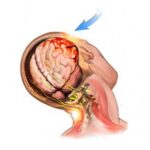A recent article published by CNN sheds light on some disturbing statistics. According to data provided by the National Safety Council, traffic fatalities are up by 14 percent already in 2015 – making this year possibly the deadliest for motorists since 2007.
The Data
The data released by the non-profit organization showed that there were more than 18,600 traffic-related deaths from January to June 2015. In 2014, comparing the same timeframe, there were 16,400. This increase of 14 percent comes with an equally disturbing cost. The NSC estimates that these accident-related deaths cost $152 billion – which is up by 24 percent from the same period in 2014.
Costs that make up the $152 billion include:
- Wage and productivity losses
- Medical expenses
- Administrative fees
- Property damage
- Employer costs
Why the Increase for 2015?
The NSC proposes several theories which are to blame for the sudden increase in traffic deaths for 2015. These include:
- Gas Prices – While gas prices are something to celebrate for most motorists, they are also a cause of concern. With the prices much lower – about 30 percent less than 2014 – more people are on the road more frequently. Also, because it is cheaper to commute, fewer drivers are engaging in carpooling, which only increases the number of cars on the road.
- More Jobs – Economic growth is a positive thing, but it can also spell disaster for United States highways and roads. The United States economy has been steadily growing and more jobs are added to the market each month – which only increases the number of drivers commuting to work each day.
- Distracted Driving – While jobs and affordable gas prices are not preventable, distracted driving is. The number of Americans constantly using their cellphones (texting or talking) while driving is increasing despite the bans. According to the NSC, Americans are “addicted” to their devices. Sadly, the increase in the number of accident-related fatalities has been linked to the use of cellphones.
What You Can Do to Help
While you may not be able to control the other drivers sharing the road with you, there are things you can do to lessen your impact on the increasing traffic numbers. Just some of those things include:
- Do not drive while distracted or intoxicated – both are equally deadly behind the wheel.
- Try to commute to work with other coworkers – even if it is just a few times per week or month.
- Lessen how often you drive and try to combine your errands into a single trip. It will save you money on your gas costs and allow you to spend less time on the road.
- Teach your teen drivers good driving habits as well to ensure that they do not engage in distracted driving.
Were You Injured by a Distracted Driver? Contact Horn Law
Distracted driving is preventable. If a driver has injured you or a loved one while distracted, you may be entitled to compensation. To arrange a free consultation, contact Horn Law online or call us at 816-795-7500 now.





